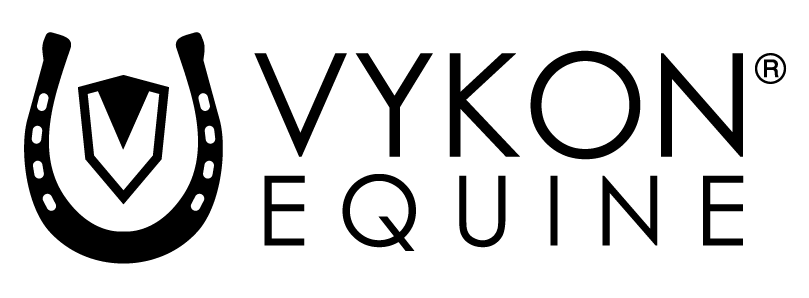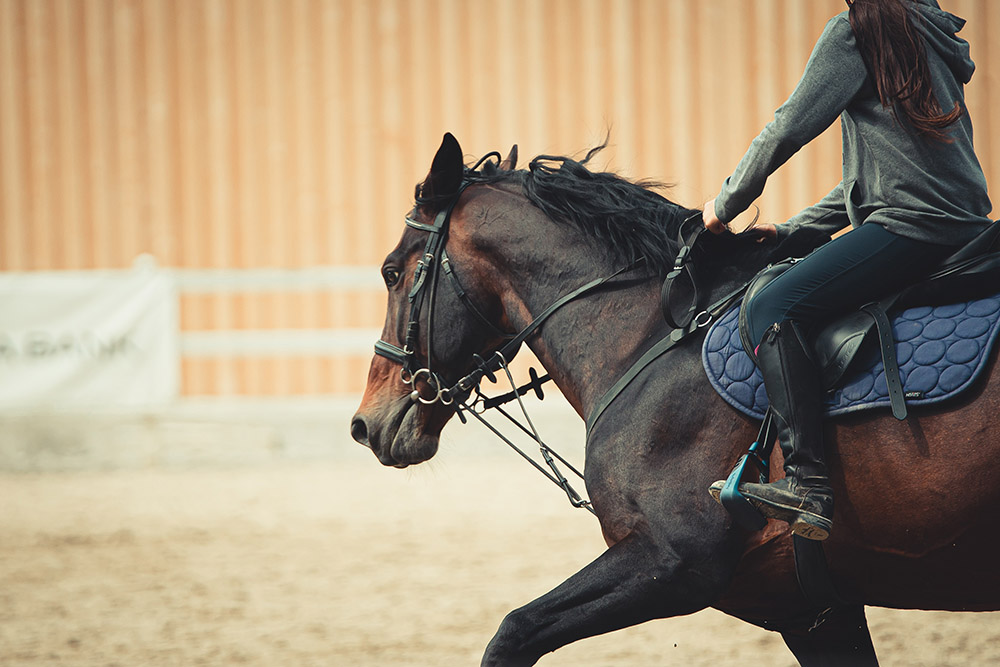What is Laminitis?
Laminitis is a painful condition that affects the hooves of horses. Laminitis is often caused by dietary and metabolic factors and is the local manifestation of a body-wide metabolic breakdown. Some of the leading causes are overeating of grains or large amounts of lush, green pasture grass, or when the horse develops insulin resistance or gains excess weight. Other causes include infections, colic, and various diseases or toxin exposure.
1 in 10 horses are diagnosed with this condition each year.
The horse’s foot has approximately 600 laminae that provide structural support and connect the coffin bone to the hoof wall, these soft tissues can become inflamed and stretch or separate from the bone, without this structural support, the coffin bone may rotate and create pressure on the sole, causing debilitating pain for the horse.
Some horses have a higher risk due to genetic factors, but all breeds and ages are susceptible to laminitis. Some recover completely, but many have lasting damage, once a horse experiences laminitis, there is risk of reoccurrence and proper care is critical for recovery.
Laminitis Basics
Signs your horse may have laminitis:
- Abnormal stance: horse avoids bearing weight on front legs
- Objection to movement: horse is in too much pain to move
- Altered gait: horse may be lame in one or all legs
- Shifting weight: horse may alternate weight bearing legs by frequently lifting leg up and placing down again.
- Increased pulse: horses with laminitis may have a stronger pulse caused by inflammation and restricted blood flow.
Changes in hoof quality:
- Flaring of the hoof wall: damaged laminae can cause the hoof to flare or have a dished appearance
- Rings on the hooves: Inflammation and restricted blood flow to the hoof can cause the appearance of rings
- Stretched white line: located around the inner edge of the hoof, the white line can become elongated
Metabolic disturbances:
- High insulin levels: a known precursor to laminitis
- Obesity: a sign of equine metabolic syndrome, is associated with a higher incidence of laminitis
- Regional fat deposits: horses with laminitis may develop accumulation of fat along the neck, withers, rump and genitalia.
What to do:
Create a plan for identifying and correcting the underlying causes of laminitis while receiving professional care for your horse. Feed your horse a proper balance of protein, vitamins, and minerals to heal and repair, adjust the diet to achieve and maintain ideal body weight. Make sure the hooves are trimmed and comfortable.
Diet plans should restrict intake of nonstructural carbohydrates (NSC’s) including sugars/fructans and starches. Excess NSC’s can increase the risk of hindgut disturbances and high insulin leading to laminitis.
Feeding legume hay (alfalfa, clover, lucerne) is usually the best place to start, along with a vitamin, mineral and protein supplement that complements the hay.
Supplement with a rich source of omega-3 fatty acids, to improve insulin sensitivity and reduce inflammation. A study has suggested that adding psyllium pellets to feed can be beneficial to insulin stability as well.
Insulin resistance:
Sugars and starch cause blood glucose level and insulin to rise.
Items to avoid feeding horses with insulin resistance or laminitis, would be:
- grain, apples, fruits, carrots, fresh grass, cereal grain hay including oat, wheat and barley.
- even the levels in grass hays may be too high for many horses.
Minerals for Laminitis
Minerals also play an important role in the development and control on insulin resistance, adding specific minerals to your horse’s diet can add antioxidants and combat inflammation.
- Copper and zinc are required for the antioxidant enzyme superoxide dismutase to function. Zinc is a commonly deficient mineral in equine forages.
- Selenium is required for glutathione peroxidase enzymes, and many more important and widespread enzymes.
- Selenium, together with iodine, is required for production of thyroid hormones. Normal thyroid function is required for horses to respond well to insulin.
- Deficiency of magnesium can contribute to horses developing insulin resistance or make it worse.
Magnesium (Mg) is a micromineral (and electrolyte) that is involved in over 300 metabolic processes in the horse’s body. It is needed for proper nerve and muscle function, protein synthesis, energy metabolism, enzyme activity and is especially beneficial for muscle tissue recovery following intense exercise.
Magnesium can be beneficial to horses with laminitis and insulin resistance. Magnesium can also benefit bone health. Adding magnesium to their diets can be done though supplementation or high-quality feeds.
Supporting your horses gut health with prebiotics and probiotics; liver health with dandelion and milk thistle; circulation with nettles and hawthorn berries, and cinnamon to help with insulin, are some natural supports that can aid prevention and recovery.
Written by: Cher Thorsen, CNP
References
https://ker.com/equinews/the-latest-on-laminitis/?highlight=laminitis
https://madbarn.ca/laminitis-risk-factors-for-horses/
https://equisearch.com/articles/take-control-laminitis-your-horse-20349/
https://madbarn.com/laminitis-recovery-for-horses/
https://feedxl.com/12-feeding-the-laminitic-horse/
https://horseyhooves.com/types-of-hay/
https://www.innovetpet.com/blogs/pain-inflammation/laminitis
https://madbarn.com/magnesium-benefits-for-horses/
https://www.sciencedirect.com/science/article/abs/pii/S0737080611000748
https://ker.com/equinews/minerals-impact-insulin-resistance-horses/?highlight=minerals






